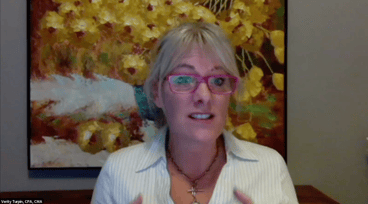
In early December 2021, Studiosity held the first Canadian-focused Symposium as part of the 'Students First' Symposia, on the topic of Student Wellbeing. This Symposium had over 300 registrations from across Canada’s higher education sector come together to hear from post-secondary student wellbeing experts and leaders, as well as a current graduate student, on the current landscape in terms of student stress, mental health, and areas of opportunity for administrators.
This panel featured Dr. Anne Duffy, Academic Psychiatrist, Division of Student Mental Health at Queen's University; Verity Turpin, CPA, CMA, Vice Provost, Student Affairs at Dalhousie University; Dr. Andrea Levinson, Psychiatrist-in-chief of Health & Wellness and Assistant Professor of Psychiatry at the University of Toronto; and student representative, Joshua Xavier, MSc Candidate at Ivey Business School. Professor Judyth Sachs, Studiosity Chief Academic Officer; former Provost and Deputy Vice-Chancellor, Macquarie University, Australia, Higher Education consultant for KPMG, and facilitator for Advance HE chaired the conversation and led the panel through questions presubmitted by Symposium registrants and raised throughout the conversation.

Starting off with opening remarks by Professor Judyth Sachs, Joshua Xavier was invited to share thoughts on to what extent the pandemic caused increased anxiety and stress as a student.
“Being a student right now, there's a current state amount of anxiety and stress, but there's also a bit of a future state. Looking at the current state, I think being on Zoom 24-7 really adds a lot of those stressors and that anxiety to your day to day work.” - Joshua Xavier Joshua continued to describe the fatigue students experience being on video calls for up to 10 hours a day, including group meetings and lectures. He also goes to describe the uncertainty students are feeling around the future, with a focus on the new graduate job market and feelings of competition amongst new graduates and those with multiple years of experience who may be applying for the same positions.
Joshua continued to describe the fatigue students experience being on video calls for up to 10 hours a day, including group meetings and lectures. He also goes to describe the uncertainty students are feeling around the future, with a focus on the new graduate job market and feelings of competition amongst new graduates and those with multiple years of experience who may be applying for the same positions.
“That feeling of ambiguity and not knowing what's going to happen next is really kind of remaining for the future of whatever this looks like. So, when we're done being a student, what does that look like? What will it look like going forward? Will I be in person? Should I move out? Should I go and relocate? … Not knowing all those things has really become that driver of stress and anxiety as a student, personally.”
When asked what three messages you could give to senior administrators in a university, Joshua responded with the following:
- Limit the time students need to actively dial into video calls; Create a synchronous and asynchronous culture that allows students to do the work on their own time and be mindful and intentional in terms of when to have student engaging on video calls.
- Creating consistency in routine; Buffers in-between classes is helpful. Keep in mind that students are often attending back-to-back video calls or lectures, so leaving time to sort themselves out between sessions can be very helpful.
- Embrace online resources and leverage the online sphere; Lean into digital first solutions vs traditional lecture style learning. Create interactive sessions using tools and resources that students are now very familiar with and often have under-utilized features.
Professor Sachs then invited the panel to comment on Joshua’s statements and facilitated a conversation on feedback and implementation of supports, what advice should be given to senior administrators, current research projects and programs at panelist universities, strategies to engage students, and more.
The following are takeaways from the 1-hour conversation. Watch the full webinar recording here.
Partnerships need to exist:
- Based on Queen’s University U-Flourish Student Wellbeing Research of pandemic and pre-pandemic cohorts of students, those surveyed during the pandemic displayed higher risk of students screening positive for anxiety, depressive symptoms and sleep problems, as well as self-harm
- When thinking about mental health and wellbeing, a lot of the issues faced are broader than that of the university and are public health and community issues
- There is a lack of access issue and a service issue even prior to the pandemic in terms of mental health access for youth
- Data from ICES and Paul Kurdyak show that in a 10-year span there's been a 66 percent increase of transitional youth seeking care, which could likely be post-secondary students using the emergency department as their first point of access (not a holistic or warm way to first meet the mental health system)
- To address student mental health and wellbeing, partnerships need to exist between hospitals, universities, police forces, and organizations, and it is important to co-design 'with students, for students' rather than taking a top-down approach.
- Partnerships between institutions must also exist: Coordination of asks to government officials, community agencies, on behalf of our students. Dalhousie has had success with their Advancement department and donors funding programs that have been packaged together with evidence and solid rationale to why and how resources would improve outcomes and our supports for students

“We've had a system of fractured mental health system in Canada prior to the pandemic. It's now brought sort of central. We there were various inequities, and they are heightened… And we need to have even more understanding, compassion, caring moving forward. So, it's not so much getting used to, it's actually keeping our foot on the gas pedal and actually driving the agenda that the pandemic has afforded us.” - Dr. Andrea Levinson
Students must be engaged and aware of resources
- Partnership with students is integral: Resources must be coordinated or rationalized into care pathways based on best evidence and students must be consulted to inform how to tailor those pathways for increased engagement
- If students are not engaging with resources or educated on the value that they bring, they are not likely to utilize
- University of Toronto is working on an open access system, using access as the key point and multiple forms of access that feels friendly. Using students to co-design those access points including virtual, in-person, asynchronous, and synchronous is key when the student needs support right away
- Not one size fits all: Students need to be met where they are at in terms of their willingness to engage. Some may come in for a one-off meeting, not really being sure what they want, and navigation to a support they are not aware of in the health and wellness centre may suffice

"We need to make sure that our students see the value, understand that they're available and how do we reach them in a way that's meaningful and provides them with that information when they most need it.” - Verity Turpin, CPA, CMA
International Students are faced with unique challenges
- As per preliminary analysis at Queen's University, symptom levels of anxiety and depression are comparable between international students and domestic students. However, international students more often indicated self-harm and suicidal ideation than did domestic students
- International students appear to have struggled more academically in their first year, and it is possible that with English as a second language, there are different learning approaches and learning demands compared to their home schools
- Mental health literacy in home countries varies and may not have been spoken about broadly or in the same way, leading to stigma or students waiting until they are in crisis to seek support
- International students more often appeared as feeling less connected, less membership with the university (university connectedness is the major protective or a major risk factor for poor mental health outcomes)

"International students mentioned to us was that they felt that mental health literacy in their home countries wasn't as prominent and wasn't spoken about in the same way, and that perhaps either students were waiting until they were in crisis. Perhaps that's why self-harm, suicidal ideation was higher. In certain cultures, it might be more of an acceptable kind of way of coping in a sense than it would be in North America or Canada. And so that was what the students told us. Of course, we're going to pursue this further. But the implications were that whilst symptom levels were similar in terms of anxiety and depressive symptoms, that self-harm and suicidal ideation was even more prominent in the international students and that perhaps we as the university could do better in terms of helping students feel more prepared academically for the task at hand." - Dr. Anne Duffy
In closing:
“While we're very dedicated to addressing the mental health and wellbeing and the continuum of mental health to illness on our campus, we can't do it alone. And we need partnerships, and we need partnerships with teeth." - Dr. Andrea Levinson
With thanks to:
- Dr. Anne Duffy, Academic Psychiatrist, Division of Student Mental Health at Queen's University
- Verity Turpin, CPA, CMA - Vice Provost, Student Affairs at Dalhousie University
- Dr. Andrea Levinson, Psychiatrist-in-chief of Health & Wellness and Assistant Professor of Psychiatry at the University of Toronto
- Joshua Xavier, MSc Candidate at Ivey Business School
- Professor Judyth Sachs (Chair), Studiosity Chief Academic Officer and former DVC, Macquarie University, Australia
For the full transcript and recording, visit studiosity.com/studentsfirst.
Additional Resources Referenced:
- ‘Managing Transitions: Making the most of change’ by William Bridges https://wmbridges.com/books/
- Mental Health Commission https://mentalhealthcommission.ca/
- U-Flourish Research Study at Queen's University https://www.queensu.ca/u-flourish/
- ICES Research with Paul Kurdyak https://www.ices.on.ca/About-ICES/ICES-Scientists/K/Paul-Kurdyak
.gif?width=756&name=Students%20First%20Symposium%20-%20Student%20Wellbeing%20in%20Canada-high%20(1).gif)